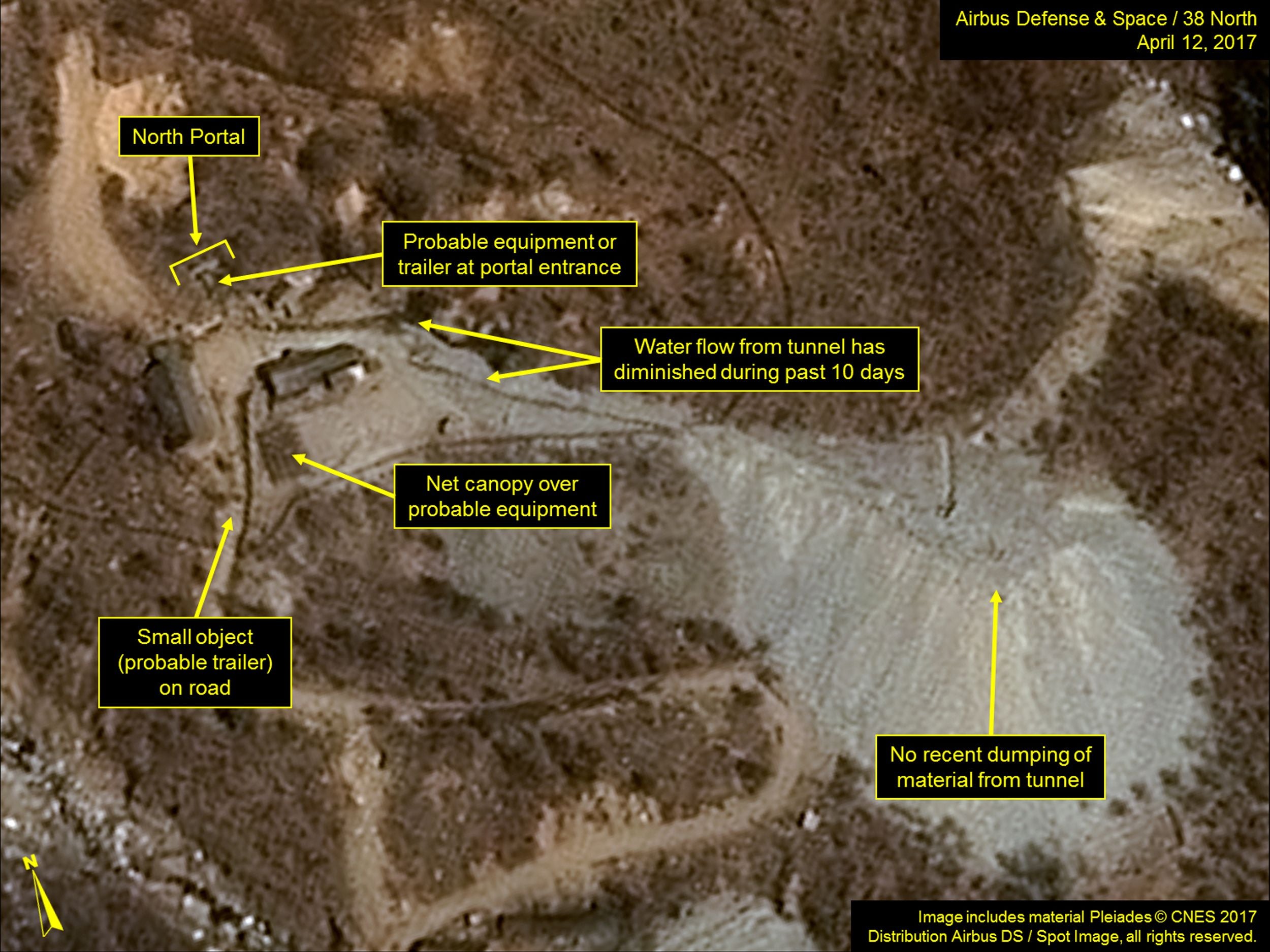North Korea tunnel collapse at nuclear test site could cause serious radiation leak
At least 100 workers feared dead following tremors at the Punggye-ri site last month

Your support helps us to tell the story
From reproductive rights to climate change to Big Tech, The Independent is on the ground when the story is developing. Whether it's investigating the financials of Elon Musk's pro-Trump PAC or producing our latest documentary, 'The A Word', which shines a light on the American women fighting for reproductive rights, we know how important it is to parse out the facts from the messaging.
At such a critical moment in US history, we need reporters on the ground. Your donation allows us to keep sending journalists to speak to both sides of the story.
The Independent is trusted by Americans across the entire political spectrum. And unlike many other quality news outlets, we choose not to lock Americans out of our reporting and analysis with paywalls. We believe quality journalism should be available to everyone, paid for by those who can afford it.
Your support makes all the difference.A reported tunnel collapse at North Korea’s key nuclear testing site has sparked fears of a major radiation leak.
At least 100 workers at the Punggye-ri nuclear site are feared to have died in the accident that happened around 10 September following the regime’s sixth atomic test earlier that month, Japanese broadcaster TV Asahi reported.
The broadcaster said there was also a second collapse during the rescue operation which may mean the death toll exceeds 200.
News of the two accidents has not been verified by Pyongyang, which is usually reluctant to acknowledge any failures to the outside world.
North Korea's sixth and largest nuclear test on 3 September triggered landslides in the detonation area according to satellite images taken shortly afterwards, experts said.
News of the accidents came just days as the head of the Korea Meteorological Administration, Nam Jae-Cheol, said future nuclear tests risked the collapse of the mountain test site, which could leak dangerous levels of radiation into the surrounding atmosphere.
He said: “Based on our analysis of satellite imagery, we judge that there is a hollow space, which measures about 60 to 100 metres, at the bottom of Mount Mantap in the Punggye-ri site.”
So far, the nuclear tests are not thought to have caused any radiation damage to foreign countries but scientists warn the hollow space inside the mountain makes it unstable.
Chinese nuclear weapons researcher Wang Naiyan told the South China Morning Post last month: “We call it ‘taking the roof off’. If the mountain collapses and the hole is exposed, it will let out many bad things.
“A 100 kiloton bomb is a relatively large bomb. The North Korean government should stop the tests as they pose a huge threat not only to North Korea but to other countries, especially China.”
Pyongyang has stepped up its nuclear and missile tests over the past year as the international community has put further pressure on it.
Donald Trump has repeatedly made incendiary public statements about the conduct of North Korean leader Kim Jong Un.
The US President warned he will invoke “fire and fury” against the country “as you have never seen before” if it did not end its nuclear programme.
But the regime has remained defiant and threatened to attack Guam – the nearest US territory to the Korean peninsula.
Join our commenting forum
Join thought-provoking conversations, follow other Independent readers and see their replies
Comments